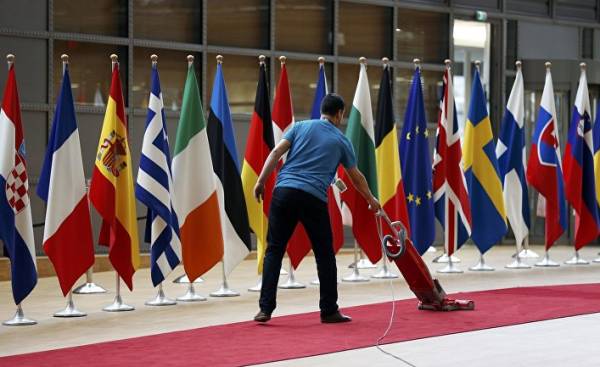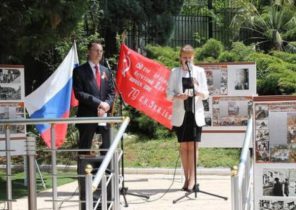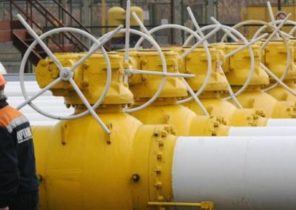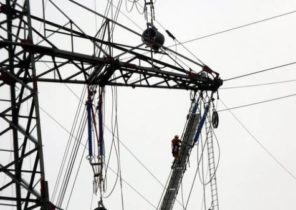
At the end of each session of the European Council, composed of the leaders of the EU countries, usually adopt an agreed final document. Thursday, March 9, he couldn’t do it, because one of its members — the Prime Minister of Poland Beata Szydlo (Beata Szydlo) has refused to approve it. And this episode has much to tell us about the future is full of challenges of multi-speed Europe.
Behavior Szydlo had no relation to the content of the document. The nationalist government of Poland tried to prevent the re-election of former Polish Prime Minister Donald Tusk to the post of President of the European Council, but her protest was ignored. The first Tusk was elected to the post in 2014, which was the act of recognition of the growing role of Poland and Eastern Europe in General in this block. However, between Tusk and the main ideologist of the current Polish government, Jaroslaw Kaczynski has established a hostile relationship, so Poland tried to offset Tusk. Angry Szydlo refused to approve the consolation final Protocol and, notably, missed the meeting on Friday, March 10.
The subsequent vote showed that Poland has no right of veto and that the European Union will not hesitate to support the opposition, not the government of his dick. This should serve as a pretty powerful warning signal not only to Poland but to Hungary — another liberal dissident in the European Union: if they continue to behave in this way, the unit may withdraw from the procedure of consensus and begin to make decisions by majority vote. Apparently, it is time for multi-speed Europe.
The idea of multi-speed Europe, a Europe where countries are moving towards Federation, each with its own speed — it may be a kind of tool of blackmail, which the big four countries — Germany, France, Spain and Italy — will be used to force other members to accept their leadership. But if it becomes the official policy of the European Union, how this mechanism will work? The summit, held this week, gives us some hints.
The leaders of the EU countries, which are part of the European Council, discussed the question of what they need to say later in March, when they will celebrate the anniversary of the signing of the Treaty of Rome that laid the foundations of the European Union. One of the last paragraphs of the final document caused concern to the governments of the countries of Eastern Europe and the independent Scandinavians:
We will continue to work together towards the common good with the understanding that some of us can move closer, farther, or faster in some areas and that it is necessary to leave the door open for those who want to join us later, and keep the unity of the single market, the Schengen area and the EU in General. The one and indivisible Union, whose members work together where possible, but with different speed and intensity where you need it.
This item was intended to convince those who are progressing more slowly that they are still members of the team. And in the final document concerning the future of Europe, which was recently proposed by the President of the European Commission Jean-Claude Juncker (Jean-Claude Juncker), the idea of multi-speed Europe was illustrated perfectly safe examples, such as the willingness of the 12 members of the European Union to harmonize the rules regarding vehicles with access to the Internet. However, all this represents attempts to embellish reality.
In reality, the concept of multi-speed Europe, most likely, will lead to the merger of the key members of the Eurozone to a fiscal Union. It is unclear who the members of the Eurozone want to create such a Union and who will meet the requirements for accession, however, these changes are alarming bells for all recipients of financial assistance of the European Union that are not part of the Eurozone. If formed a two-tier budget, the main donors are likely to want most of the money stayed inside the first level, dividing them between the closest members.
Members of this core group would potentially be much easier to come to consensus on all issues, such as border, immigration, labour laws and even taxes. Ultimately the EU will become a German organization for type, where the discussion always preceded the decision, but where no one is going to coddle those who are not willing to follow the majority. This approach promotes a candidate in the presidential elections in France, Emmanuel macron (Emmanuel Macron). Last week, he said:
If the Eurozone failed to achieve progress in the last few years, it’s because she’s ashamed of himself and afraid to face those who chose to remain on the balcony or in the lobby. Let’s still try to implement the idea of multi-speed Europe.
If the implicit threat here is that – not going to worry about what will remain of these countries in the European Union or leave it, it is difficult to consider it credible. Among Eurozone members, there is no agreement on matters of fiscal policy. Obviously, they can’t reach agreement even on the project of introducing a single financial turnover tax, which was proposed by the European Commission in 2011. Those 11 countries that joined the working group for this tax, and are members of the potential core of multi-speed Europe. However, they still failed to achieve any significant results, and Estonia left the working group.
The main problem of the European Union from the beginning was that he could not articulate their federalist goals, making the economic benefits of Union are available for many countries, some of which did not want to sacrifice their sovereignty in exchange for these benefits. To move these countries in the category of second-class is not as easy as to provide a majority of votes. This will require a Federal commitment from the economically strong EU members. If someone were being pushed aside due to the fact that it moves too slow, the other should be ready to move quickly.
In Germany, Chancellor Angela Merkel and her main rival in the upcoming elections, the leader of the social Democrats Martin Schulz (Martin Schulz), most likely, will demonstrate the commitment that is necessary for a closer Union. Will do the same and macron, if he will triumph in France. However, the leaders of Spain, Italy, the Netherlands and Belgium are unlikely to be too excited about this idea, given the fragmentation of the political systems of these countries and the unreliability of the government positions. In any case, it is almost impossible to start to bring together a group of “high-speed” States until after the election this year.
Meanwhile, the negotiations on the future structure will continue, and countries will be trying different configurations. On Friday, March 10, Belgium, the Netherlands and Luxembourg invited the Visegrad four — Poland, Hungary, Slovakia and the Czech Republic — separate talks on the future of the European Union. The leaders of the Benelux countries also plan to meet with their colleagues from the Baltic States. The Prime Minister of the Netherlands mark Rutte (Mark Rutte), which is behind this initiative, wants to use the traditional Dutch technique of consensus-building in the hope that it will work better than poorly veiled threats of exclusion.
May soon form a new consensus. Perhaps Eastern European and Scandinavian countries just develop their own plans. It’s not too favorable option for some of those countries that could potentially enter the core of the European Union. No matter how hard a variant of multi-speed Europe, its alternative may be worse.







